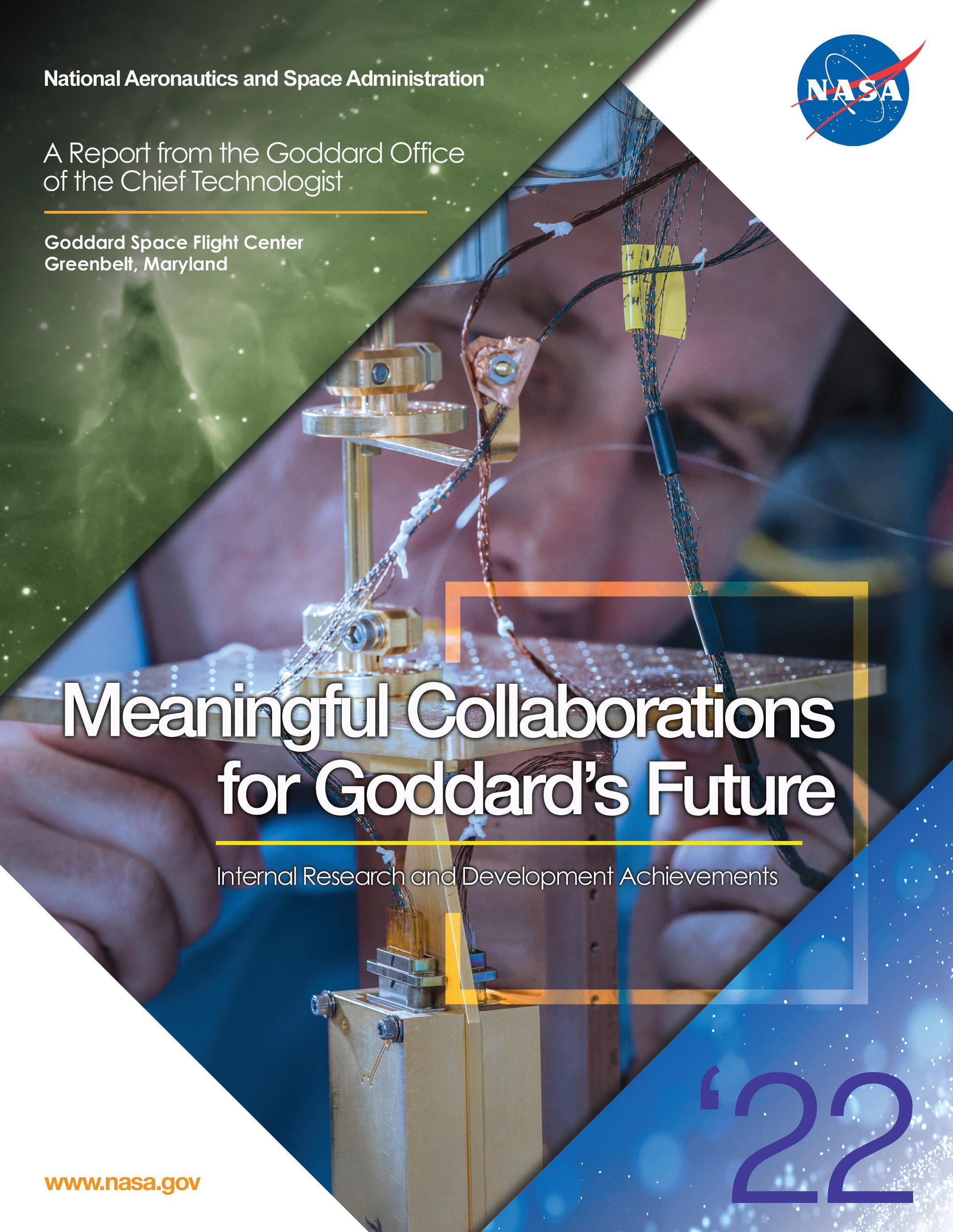
About the Cover:
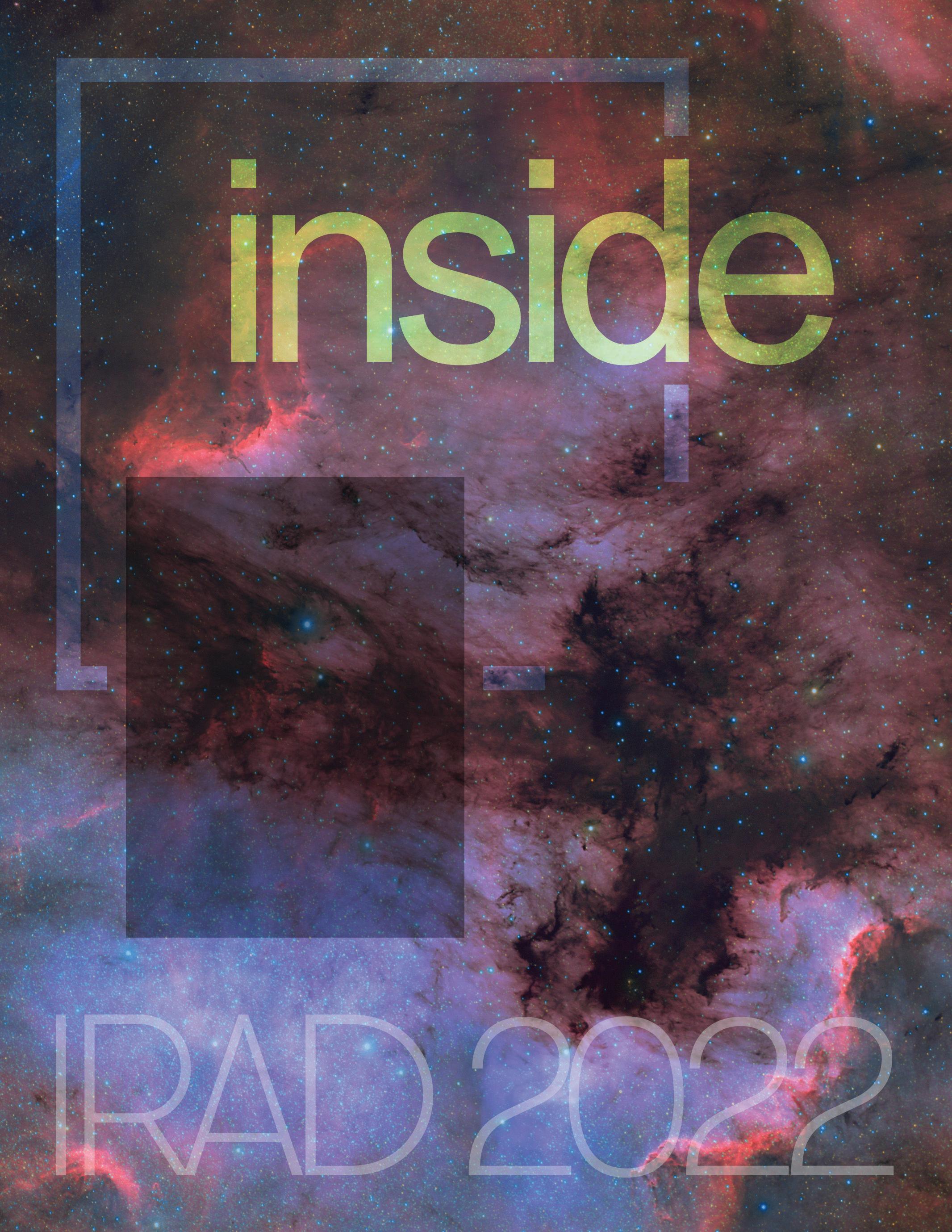
Jack Sadleir inspects fiber-optic connections in a cryogenic system used to test his life-finding sensors at Goddard. Sadleir and his team developed a sensor that not only detects individual and multiple photon hits with unprecedented accuracy but identifies the energy, or color, for each photon detected. When a photon strikes a surface, its energy heats the impact site. Acting like a very precise thermometer, Sadleir’s quantum calorimeter measures how much each photon’s energy heats the sensor. His sensor has demonstrated sensitivity in visible, ultraviolet, and near-infrared wavelengths, and by adjusting the absorber and detector plate or using different materials, Sadleir said detectors can even be manufactured to identify energy from non-electromagnetic sources. Sadleir’s work on the sensor and the Goddard Quantum Lab strategically positions Goddard as NASA’s Quantum Center of Excellence.
One - page 2
Message from the Chief Technologist
Two - page 3
FY22 Achievements at a Glance Breakdown of FY 22 IRAD and CIF Awards
FY 22 Agency New Technology Reports (NTRs)
Three - page 5
The Best in Innovation – Swarm Communications
Four - page 8
Significant FY22 Successes
1 Peter’s Message
Few things illustrate the culture of innovation at Goddard quite like the Internal Research and Development Program, and nothing exemplifies this culture better than the in-person annual Poster Session held this November. It was particularly heartening this year to see how Goddard innovators came together to share ideas and progress and learn about others’ work and explore collaborative opportunities.
Collaboration is my keyword for FY22. When I think about the power of bold ideas coming together across disciplines to open new windows on the universe, I am proud to know I need look no further than our incredible community of innovators. Goddard’s diversity in backgrounds, skills, and experience contributes to a culture of interdisciplinary collaboration. The resulting exchange of ideas generated conversations which participants did not seem to want to end.
With that in mind, I offered a Spontaneous IRAD this year to help build on those poster session discussions and crosspollinating ideas. About a half-dozen innovators came forward to discuss potential collaborations for funding after the session. The goal of these awards is to capitalize on a culture of spontaneity and encourage new ideas any time we can find resources.
Over the last year, Goddard innovators demonstrated the value of collaboration and cooperation to make good ideas reality and build on our center’s strengths in optical navigation, autonomous operations, and other areas.

Both smaller spacecraft and missions and the communications challenges of deep space exploration drive the need for spacecraft to function autonomously. Critical maneuvers require immediate onboard responses from navigation guidance and control systems. In addition, more distant missions find communications bandwidth to Earth stretched thin. Building on Goddard’s autonomous Navigation Guidance and Control software toolkit, IRAD investigators added an eye-opening variety of optical navigation technologies to autonomous operations capabilities (Page 10).
NASA is looking beyond the days dominated by large flagship missions flying a single spacecraft or instrument into the void to provide a single view of the universe. Distributed missions will combine perspectives from multiple spacecraft, capturing light from more of the spectrum to revolutionize missions’ ability to explore everything from Earth to the remotest targets. Goddard innovators across disciplines and lines of business are preparing for the challenges of coordinating spacecraft swarms, disparate sensors, and even visiting multiple destinations. (Page 8)
New investigations harnessed the power of artificial intelligence to design spacecraft hardware, pushed the limits of quantum physics for more sensitive instruments, and developed a dazzling variety of new lasers in multiple bandwidths for everything from navigation to finding water on distant worlds, among others.
Let’s hear it for a great year of innovation and collaboration. It is abundantly clear to me that the IRAD Program embodies some of Goddard’s best and brightest scientists, engineers, and innovators, putting their heads together to achieve leading-edge instruments, missions, and capabilities.
Peter Hughes Chief Technologist NASA’s Goddard Space Flight Center

2
2 Breakdown of FY21 IRAD Awards
Goddards leadership values research and development and, is committed to funding and effectively managing Goddard’s Internal Research and Development (IRAD) program.

Leadership knows R&D attracts, retains, and cultivates talented scientists and engineers. The IRAD program creates experts in the critical, advanced technologies NASA needs
to further explore our universe. This dual investment in the workforce and innovative technologies positions the Center to continue winning new missions and instrument starts in areas important to NASA and to Goddard’s leadership in certain scientific disciplines and technical capabilities.
FY22 IRAD Allocations
Communication and Navigation 10% Cross Cutting Capabilities 14% Earth Science 14% Heliophysics 10% Planetary and Lunar Science16% Science SmallSat Technology 8% Suborbital Platforms and Range Services 2% Astrophysics 16% 3 Strategic Center Investments 12%
New Technology Reports (NTRs) Provide Benchmark for Gauging Success
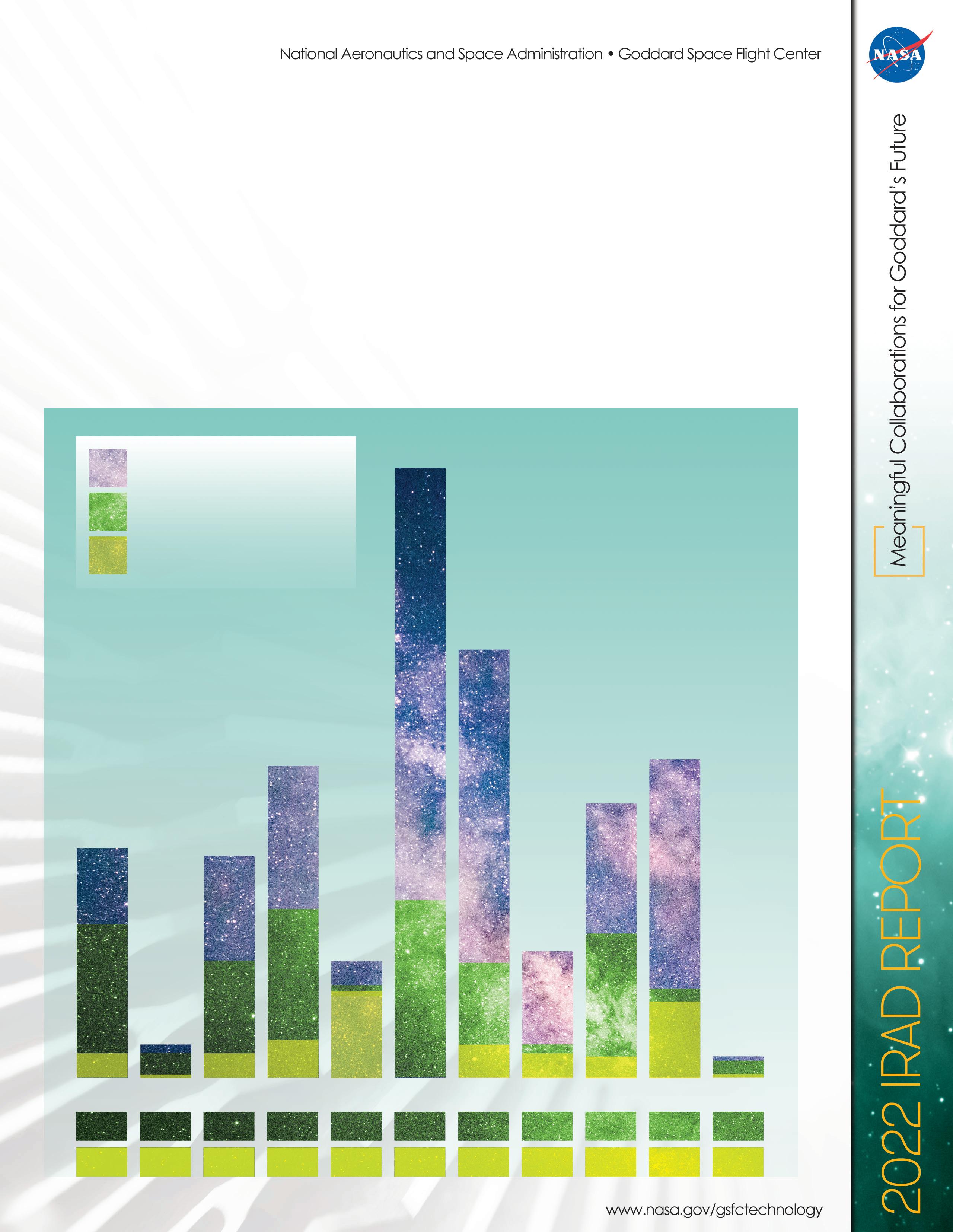
NTRs capture information about technical discoveries, improvements, innovations, and inventions so that NASA can disseminate these technologies appropriately under its mandated technology-transfer program. Since many of these NTRs result from IRAD- or CIF-funded efforts, they also gauge the success of our Research and Development programs.
By the close of FY22, Goddard technologists filed 189 reports, with a strong showing by collaborators in small business and educational institutions. Of all NASA’s field centers, Goddard came in second in the number of NTRs submitted by small business partners, who submitted 105 NTRs, and third in the number submitted by colleges and universities, with 22 reports.
FY22 Agency NTRs
Total NTR’s Small Businesses Colleges & Universities
4
GSFC HQ JPL JSC KSC LaRC MSFC SSC ARC AFRC GRC 81 15 17 1 72 13 105 22 5 52 116 0 70 21 22 17 82 16 56 47 12 1 136 22 128 73 348 257 76 168 192 189 16
GODDARD STRATEGIC PARTNERSHIPS OFFICE
3 NASA Innovator of the Year and IRAD Poster session
Goddard’s Office of the Chief Technologist has named engineer Scott Hesh as this year’s FY22 Internal Research and Development (IRAD) Innovator of the Year, an honor the office bestows annually on individuals who demonstrate the best in innovation.

An electrical engineer with an insatiable curiosity, Scott Hesh developed a sub-payload dispersal system that tracks and
consolidates communications for 4 to 16 science packages ejected from sounding rockets. Since 2017, Hesh and his team worked hand-in-glove with science investigators to develop a technology to sample Earth’s upper atmosphere in multiple dimensions with increasingly accurate time and location data.
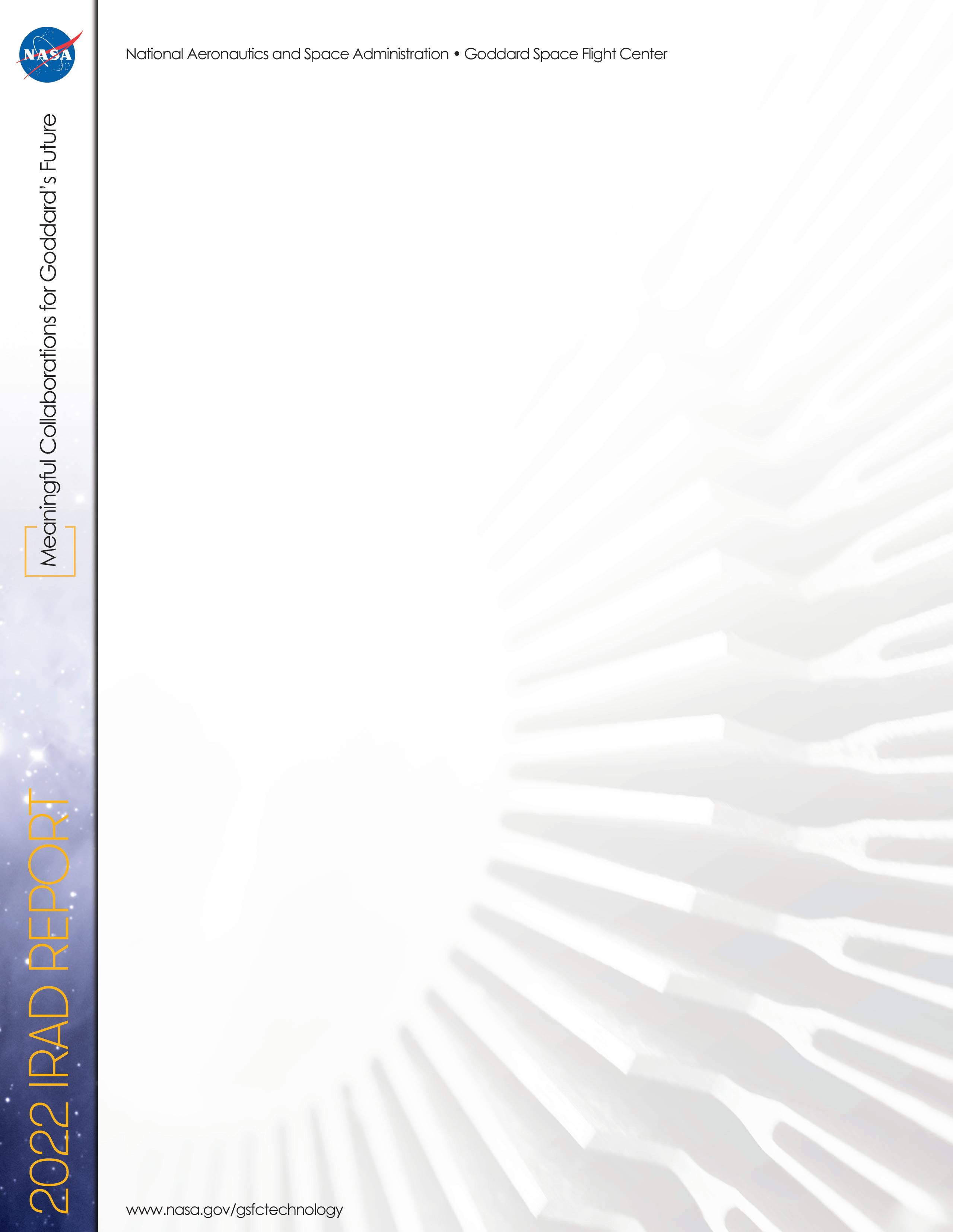
5
Innovator of the Year Scott Hesh describes the science payload cannister for his Swarm Communications technology to Bhanu Sood, deputy chief technologist overseeing the IRAD program, at Goddard’s FY22 IRAD Poster Session.
Photo Credit: Michael Guinto
“Scott has this enthusiasm for what he does that I think is really contagious,” said Aerospace Engineer Cathy Hesh, NASA’s Sounding Rocket Program Technologist.
Mechanical Engineer Josh Yacobucci has worked with Scott Hesh for more than 15 years, and said he always learns something when they collaborate.
FY22 IRAD Poster Session Sparks Collaboration

“Scott brings this great perspective,” Yacobucci said. “He could help winnow out things in my designs that I hadn’t thought of.”
For his interdisciplinary leadership resulting in game-changing improvements for atmospheric and solar science capabilities, Scott Hesh earned Goddard’s Innovator of the Year Award.

6
Innovator L. Rodriguez de Marcos discusses his project with Astrophysicist Paul Scowen and peers FY22 IRAD Poster Session. Interdisciplinary discussions like these often lead to new ideas for collaboration.
Photo Credit: Michael Guinto
Significant FY22 Successes and Collaborations
Generative Design
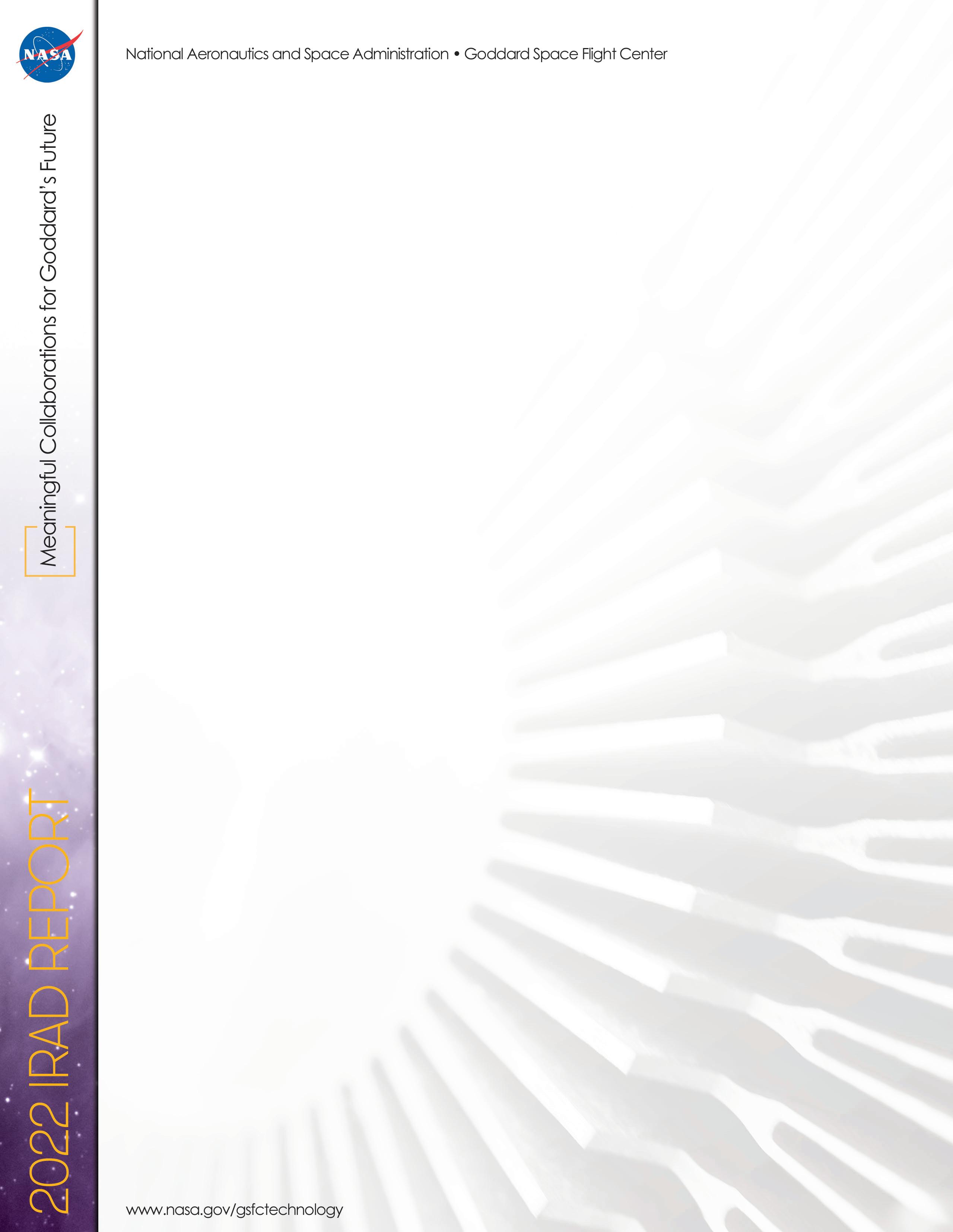
Ryan McClelland brought Goddard into the world of artificial intelligence-generated design and digital manufacturing. He successfully developed and adapted a process radically improving spacecraft and instrument structural development by demonstrating how the design, analysis, and fabrication of many spacecraft structures can now be largely automated
by AI and robots. Improvements over traditional design processes include reducing development times and costs by a factor of ten, increasing stiffness and strength while reducing mass by two to four times, and reducing the likelihood of failure by lowering stresses and reducing human interface errors. This technology holds the potential to improve all NASA’s one-off hardware development projects while enabling missions to achieve more science per dollar by reducing development costs and increasing performance.

7
4
This organic-looking skeletal structure shows how an AI program can connect an instrument to a spacecraft or payload with less aluminum than traditional computer-assisted design techniques. The interface points – the triangular and other flat surfaces with threaded holes – are set in place by a human, as well as any space needed open for instruments, hardware, or a light path. The AI makes the connections between them, and an independent verification program analyzes structural integrity before the model is commercially milled.
Photo Credit: Ryan McClelland
Distributed Space Missions: Architecture for the Future
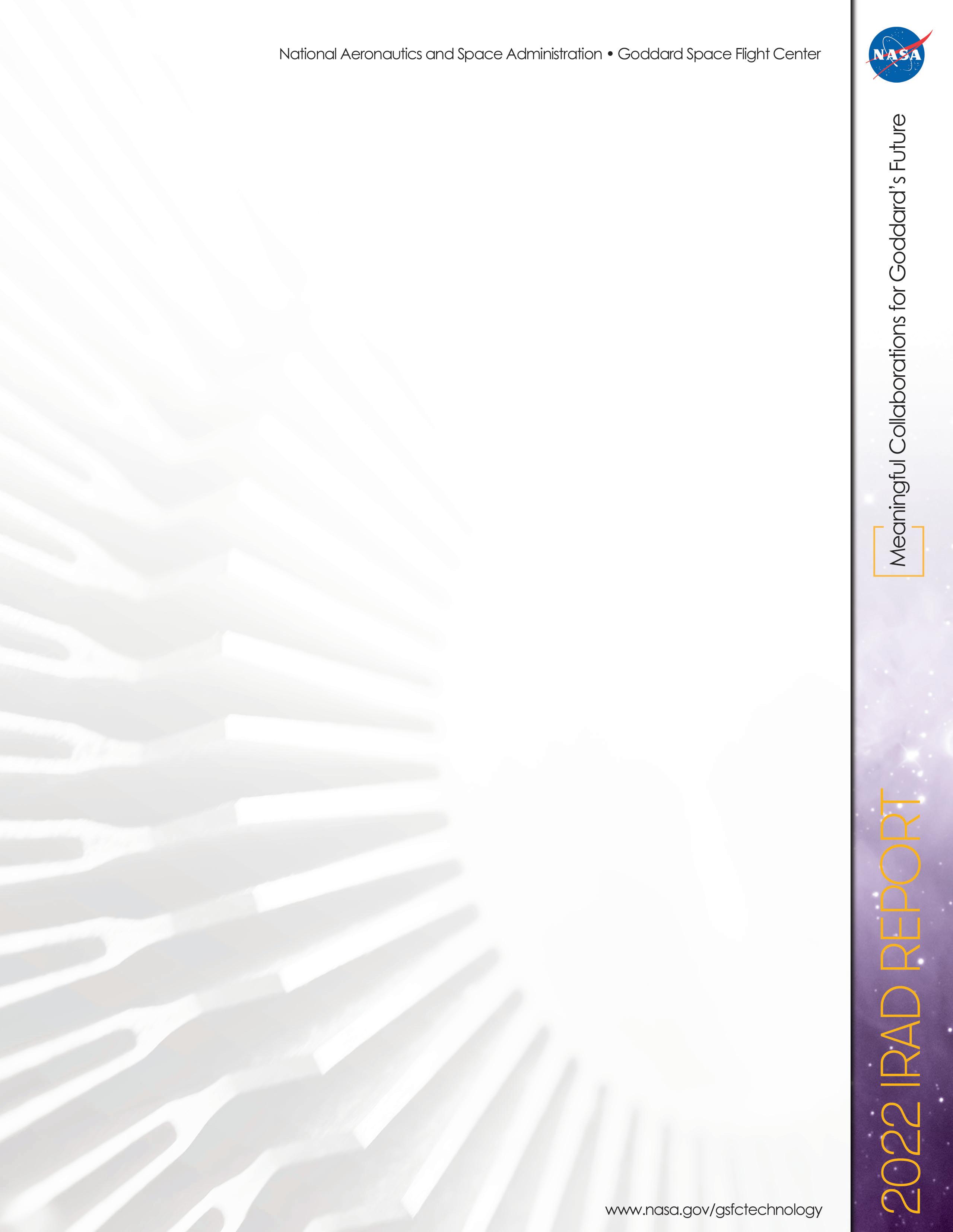
NASA is looking beyond the days focused primarily on large flagship missions flying a single spacecraft or instrument into the void to provide a single view of the universe. Distributed missions will combine perspectives from multiple spacecraft, with a variety of instruments capturing light from more of the spectrum to revolutionize exploration of everything from Earth to the remotest targets. Goddard innovators across disciplines and lines of business are preparing for the challenges of coordinating spacecraft swarms, incorporating disparate sensors, and even visiting multiple destinations.
From the Communications and Navigation line of business, Frederick Naikal is developing new broadband radio receivers to tackle the high-data rate communications distributed missions will need. In addition to bandwidth, distributed satellites will coordinate everything from orbit, trajectory, pointing, data collection, and other swarm functions in a local network. Jonathan Boblitt and Yen Wong are working on disruption tolerant networking (DTN) protocols to ensure data is not lost between nodes of these distributed networks.
Distributed missions will require coordinated data collection, often observing phenomena from multiple perspectives. How those spacecrafts coordinate their trajectory and pointing was the focus of Sabrina Thompson’s Dynamic Intelligent Tasking for Opportunistic Science (DITOS) of SmallSat Constellations. Meanwhile, Pavel Galchenko put considerable effort into software solutions for formation control.
Also helping unite multiple spacecraft, Wayne Yu is looking at how Goddard’s autonomous Navigation Guidance and Control, or autoNGC, can adapt to the demands of DSM autonomy through deep space or in orbit around distant worlds. In her Cross Cutting Technologies investigation, Evana Gizzi built on her prior mission resilience work on fault-diagnosing algorithms for spacecraft by extending these programs to accommodate swarms. Other efforts funded in FY22 include mission planning for small satellite swarms, and emulation environments that can simulate these missions in a whole system, or digital twin engineering approach.

8
This image depicts multiple small satellite spacecraft orbiting Earth in formation as a distributed space mission. Pavel Galchenko is working on a formation control toolkit to enable planning and executing distributed spacecraft formations.
Photo Credit: Pavel Galchenko
OpNav
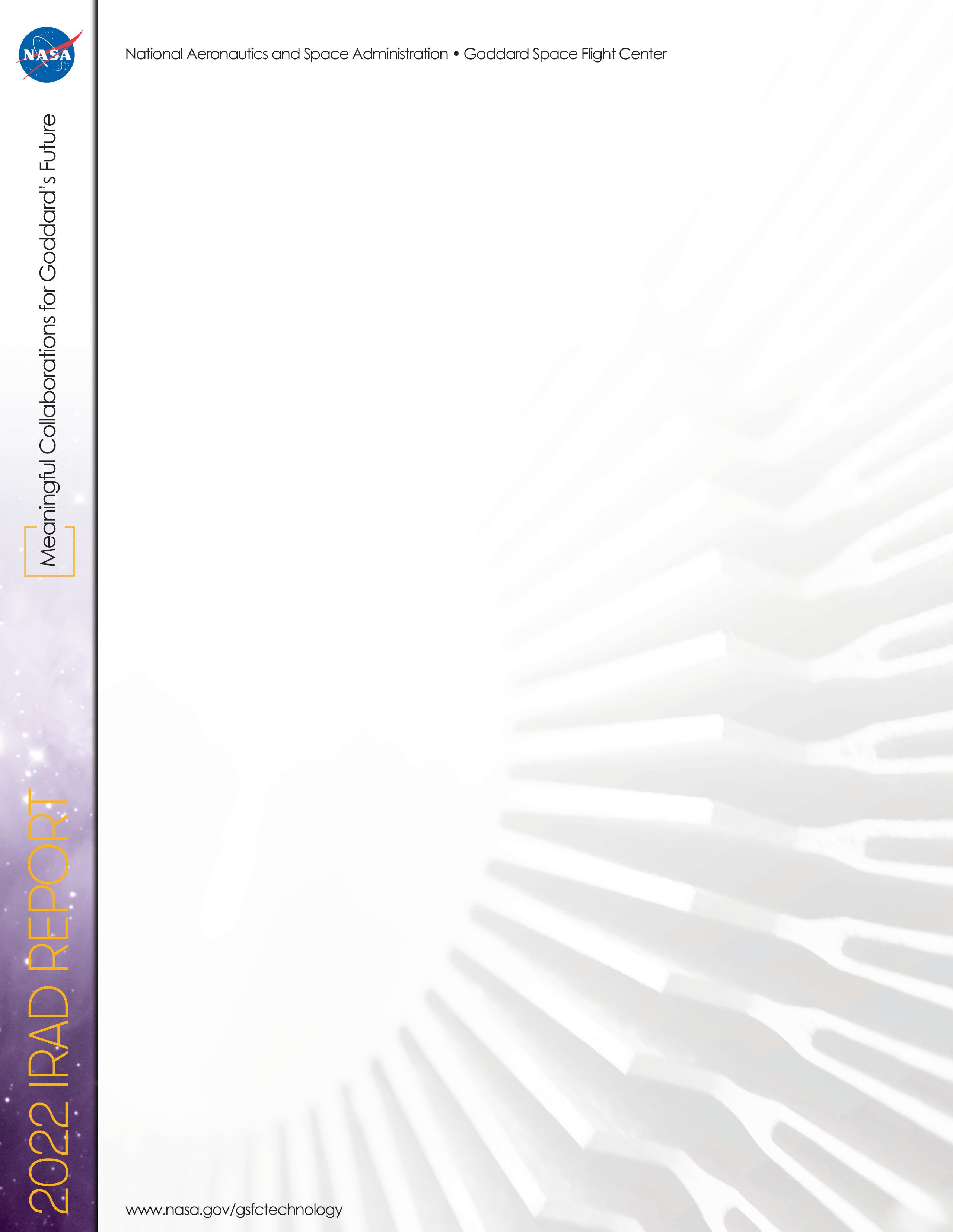
Instruments that gather science data can often serve as “eyes” for spacecraft using the Goddard-developed autonomous Navigation Guidance and Control (autoNGC) software system, reducing dependance on ground control. While optical navigation solutions depend on high-datavolume images, enabling spacecraft to conduct those navigation guidance and control functions autonomously preserves communications channels for sending critical science data back to Earth.
Andrew Liounis and Chris Gnam are developing a celestial optical navigation capability to allow a spacecraft to track moons, planets, and other bodies against background stars, providing accurate location within the solar system (CuttingEdge, Fall 2022).
Once a spacecraft approaches its destination, optical navigation might give way to lidar scanning and ranging. Guangning Yang and Stephen Mark worked to improve 3D Mapping and navigation lidar technologies from the Communication and Navigation and Cross Cutting
Technologies lines of business in FY22. Yang developed tools that would use the same lidar for navigation, high-resolution 3D imaging and laser communications. Mark stepped back to identify hardware, software, and technology features useful for developing high-fidelity, lightweight systems of the future and worked to establish a self-sustaining product line of 3D mapping lidars for multiple applications.
Using terrain images and models, meanwhile, can provide location accuracy for planetary probes for landing, sample collection and navigating the surface, while providing accuracy down to a few dozen feet. Multiple projects in FY22 built on Goddard’s history with terrain relative navigation (TRN). Alvin Yew developed a system to identify the rocky horizon of the Moon or Mars and improve location resolution on the ground (CuttingEdge, Fall 2022) Michael Shoemaker worked to improve TRN solutions by testing them on data from the Mercury MESSENGER mission. David Wilson worked on a project to provide accelerated spacerated hardware for processing the high data-volume images that TRN uses for navigation.

9
The rim of de Gerlache crater – an Artemis target destination – is well illuminated, while a smaller crater within is draped in shadow. Research engineer Alvin Yew used an image processing tool to identify horizon lines and highlight them in red. He is working on an artificial intelligence application that would compare those lines on images taken by explorers to a 3D model of the moon like this one created by NASA’s Solar System Exploration Research Institute. NASA/MoonTrek/Alvin
Image
Credit:
Yew
Terahertz Laser for Exploration


Finding water on the Moon could be easier with a laser developed by Berhanu Bulcha that capitalizes on an effect called quantum tunneling to generate a high-powered beam in a bandwidth where water is known to absorb light. His terahertz laser fills a gap in current laser capabilities and could power a type of spectrometer for accurately locating water and other volatiles. He prototyped the laser in collaboration with Longwave Photonics through NASA’s Small Business Innovation Research (SBIR) program (CuttingEdge, Fall 2022). His work earned him an Early Career Innovator grant to continue developing the technology.
High-Powered Palm-Top Laser for Spectroscopy

A new laser in a tiny package could pin down the age of rocks on other planets. It also could fit into a small lander or an astronaut-deployed, portable chemistry lab. The laser developed by Goddard Physicist Barry Coyle fills a gap in available technology, giving future planetary missions a powerful but compact and lightweight tool to explore how
other worlds formed. Scientists use the ages of rocks to interpret how planetary surfaces formed and evolved throughout the solar system. Coyle’s laser produces a high-pulse energy beam by getting the pulse duration, or width, well below a nanosecond (CuttingEdge, Spring 2022).
10
Photo Credits: Michael Guinto
This tiny laser capitalizes on quantum-scale effects of materials just tens of atoms across to generate a high-powered beam in a portion of the spectrum where traditional lasers fade in strength.
An early prototype of the Dragonfly Mass Spectrometer (DraMS) laser with 3D-printed parts is tested on a bench in a Goddard laser lab. The compact laser will help power a chemistry lab aboard the Dragonfly probe which will visit Saturn’s moon, Titan.
Photo Credit: Matthew Mullin
Lasers for Improved Communications and Astrophysics

Laser communications and data networking is gaining ground with laser terminals on the International Space Station and planned for the Artemis II mission and Lunar Gateway. This internet of light has implications for revolutionizing more than communications, however. Astronomers are looking at how it can transform our ability to peer deep into the cosmos, including resolving the environment around black holes. Peter Kurczynski’s Event Horizon Explorer Mission Concept Study seeks to establish a mission to extend the Event Horizon Telescope, a global network of radio telescopes that provided humanity’s first look at a black hole. Kurczynski said the way to improve the resolution on that first fuzzy
red image of an event horizon is to increase the size of the telescope network beyond Earth.

To transmit the high volume of radio data with the precise synchronization needed to integrate with that network, he would need Lasercomm’s data communication capacity. Hua Jiao has been working for years to improve data rates and reduce error rates in optical communications receivers and modems. His FY22 project prototyped a multiplexing optical modem that could be used for the Event Horizon Telescope. Jiao’s project proved capable of handling 300 Gbps of optical data with a low error rate.

11
Image Credits: Event Horizon Telescope Collaboration/Jeremy Schnittman
The first picture of a black hole (above) was made using observations of the center of galaxy M87 taken by the Event Horizon Telescope. Peter Kurczynski believes extending the EHT network into orbit would provide resolution more like the data visualization showing the ring of light bent around the black hole (below).
Planetary
Further exploration of the Moon and other planets will require identification of compounds for resource utilization as well as science. Several Lunar and Planetary Sciences IRADs focused on new ways to break down and interpret the components of these worlds.


Steven Li developed and tested a compact, mid-infrared laser with a high repetition rate for mapping volatiles on airless bodies, as well as mapping the dark sides and permanently shadowed regions of asteroids, planets, or moons. The ATLAS-iOPO laser will produce a 100mW beam between 2
to 3.5 µm in wavelength. This is about 10 times higher output power with the same size instrument as used for the Lunar Orbiting Laser Altimeter on the Lunar Reconnaissance Orbiter. Meanwhile, Timothy Stubbs worked on a multi-wavelength spectroscopic lidar for similar goals.
On the other end of the spectrum, Amy McAdam workd on a Light Element X-ray Analyzer, or LEXA. Her alpha particle X-ray spectrometer would effectively analyze light elements as heavy as Carbon for lunar and planetary missions.
12
A portion of the far side of the Moon looms large just beyond the Orion spacecraft. Further exploration of the Moon and other planets will require more ways to identify compounds for resource utilization as well as science.
Photo Credit: NASA
Earth
Space-based observations of Earth’s planetary boundary layer (PBL) on a global level is a key Earth science focus area for the coming decades. Studying the global system will enable scientists better understand the interaction between the surface and the atmosphere and how that evolves in a global, changing climate.
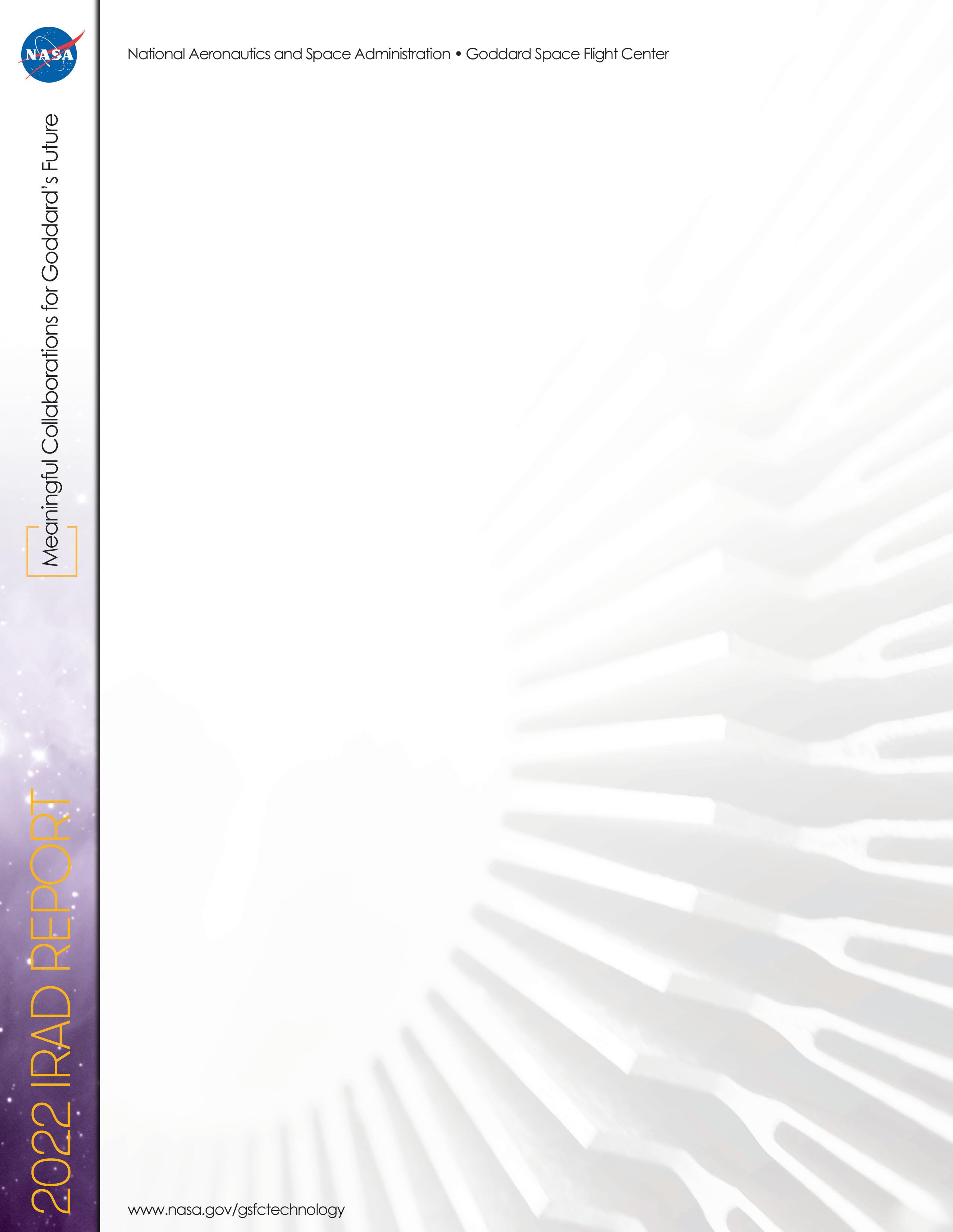
Antonia Gambacorta has been working on technology to study this layer using hundreds to thousands of wavelengths of light. In FY22, she developed data fusion retrieval algorithms to demonstrate a multi-sensor technology approach to PBL Sounding (See CuttingEdge Winter 2022), and she recently won a 4.5 million ESTO grant to continue development. She also received an FY23 IRAD to integrate cloud profiles into her atmospheric simulation models.
To help monitor the pollutant NO2 in the boundary layer, Steven Bailey developed and tested a radiosonde based on a technique called Cavity-Enhanced Absorption Spectroscopy (CEAS). He successfully flew his instruments on two balloon flights through the lower atmosphere. NO2 is a critical pollutant that produces harmful ground-level ozone as well as acid rain.

John Moisan said AI will direct his A-Eye, a movable sensor. After analyzing images scanned with a wide view camera, his AI would not just find known patterns in new data, but also steer the sensor to observe and discover new features or biological processes. Moisan is continuing to develop HYPPOS, his Hypermapping with Hyperspectral Precise Pointing Optical Sensor (See CuttingEdge, Fall 2022) by focusing on the pointing algorithms in FY23.

13
The planetary boundary layer is where people live, and it includes weather and airborne particulates that affect us all. Studying it from space is a NASA priority for the coming decades, but this goal comes with significant challenges.
The NO2 instrument is ready to launch.
Photo Courtesy: Steven Bailey
Image courtesy: Joseph Santanello/NASA PBL Study Team
SPARS
In addition to the greater science data collection demands on smaller satellites, improved processing capability will enable future Distributed Spacecraft Missions (DSM). These will require faster processing not only for sciencedata collection and packaging but also for the additional demands of constellation or swarm management. Gary Crum’s Miniaturized, High-Reliability Quad-Core Processor Card design will cover a capabilities gap in processing needs identified between Goddard’s current MUSTANG, SpaceCube, and MARES designs.
Alessandro Geist is working towards developing a miniaturized, high-reliability solid-state data recorder (SSDR) for CubeSat/SmallSat applications or instrument electronic boxes in harsh radiation environments. Geist’s card design features high read/write data rates and massive density (12 Tbits) in a 10 cm x 10cm card. Smaller missions are targeting harsher radiation environments such as geostationary Earth orbit, polar orbit, and lunar and planetary missions. The team completed the requirements, printed circuit board schematic and layout, and parts list for the SSDR adapter card and has sent out the board for fabrication and assembly.

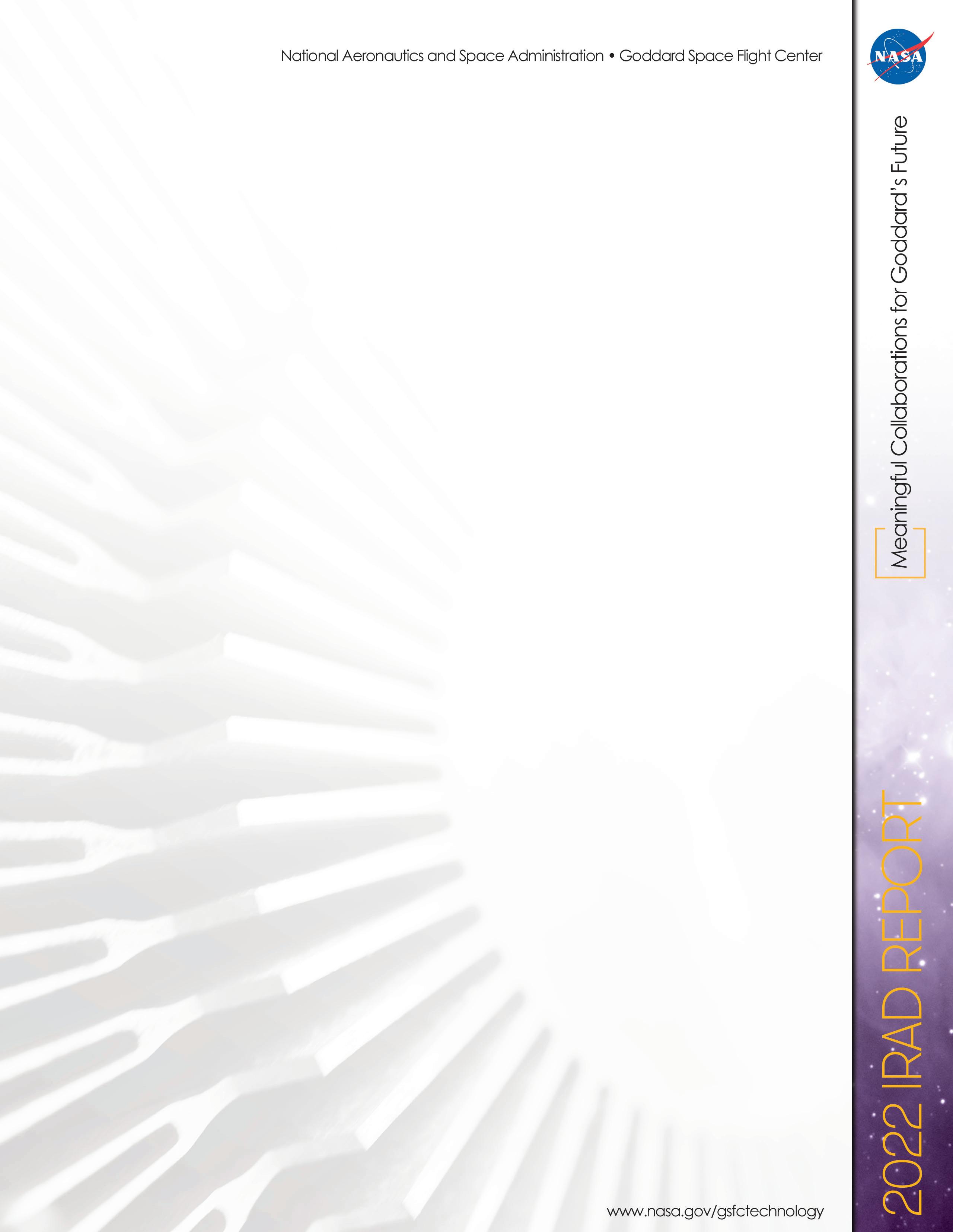
Helio
Studying solar flares in X-ray frequencies is challenging due to the enormous quantity of photons emitted from the sun during a flare. Kyle Gregory’s team is working on a Caliste hard X-Ray detector capable of handling very large X-ray bursts while keeping it compact and power efficient. These requirements make their sensor an ideal technology for a secondary instrument on a larger mission or as a CubeSat sensor that could be incorporated into many missions. This technology could advance of our understanding of solar flares by enabling the first stereoscopic X-ray measurements of a solar flare via the PADRE mission in collaboration with Solar Orbiter.
To understand the physics of interactions between coronal mass ejections (CMEs) and the ambient solar wind, Jeffrey Newmark is working on a miniature coronagraph instrument to fit into a 6U package – about the size of a briefcase. This compact instrument will help advance scientists’ knowledge of shock formation in the Sun’s atmosphere, or heliosphere, as well as the expanse of CMEs in interplanetary space. This will lead to better estimates of CME arrival times and their potential impact on Earth’s space weather, satellites, and human explorers.
14
Greater processing power and data storage like this 12 Tb card concept present numerous challenges if they are to survive the harsh radiation environment of space.
Image Courtesy Allesandro Geist




























